Ipso Cast
All benefits at a glance
All benefits at a glance
- Time required for plaster modelling of a TT prosthetic socket is reduced
- Higher quality due to simulation of the pressure conditions in the subsequent prosthetic socket
- Detailed optimisation through direct interven-tion during plaster casting
Technical data
Technical data
| Article number | 743G15 |
|---|---|
| To be used for | Taking plaster negatives under load for the fabrication of a TT socket |
| for | for attachment to 743A11 Ottobock casting frame |
| Weight | 5,7 kg |
| Scope of delivery | 1x adapter for connection to 743A11 Ottobock plaster device, 3x retaining ring for casting tube (⌀ 110mm, ⌀ 140mm, ⌀ 180mm), 1x 743Y760=90 casting tube (⌀ 90mm), 1x 743Y760=110 casting tube (⌀ 110mm), 1x 743Y760=140 casting tube (⌀ 140mm) |
Functionality
Functionality
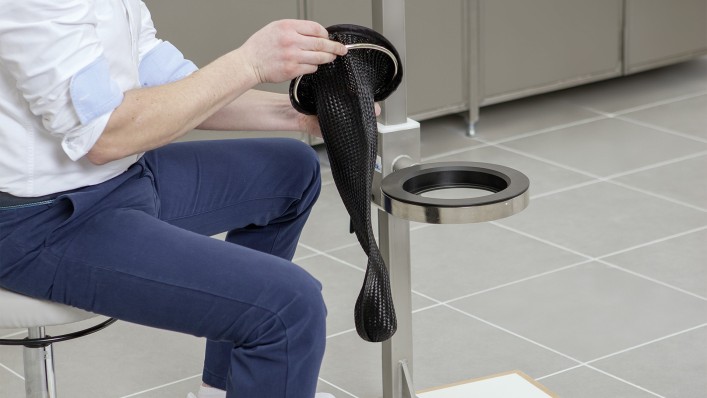
Step 1
The casting tube is passed around the appropriate retaining ring.
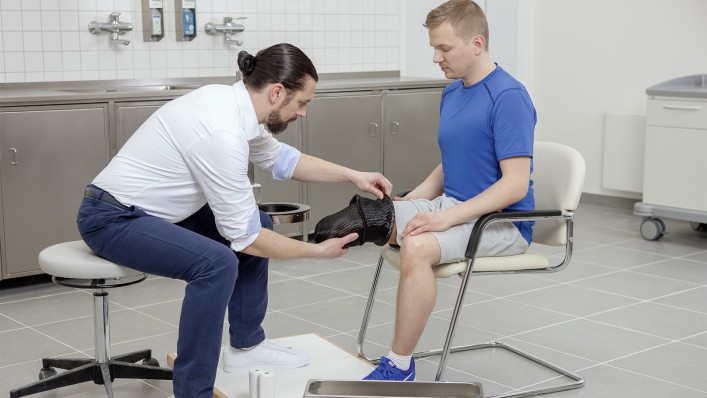
Step 2
The required length of the casting tube can be determined while the user is seated. By stepping into the Ipso Cast on a trial basis without plaster, the length can be fine-tuned.
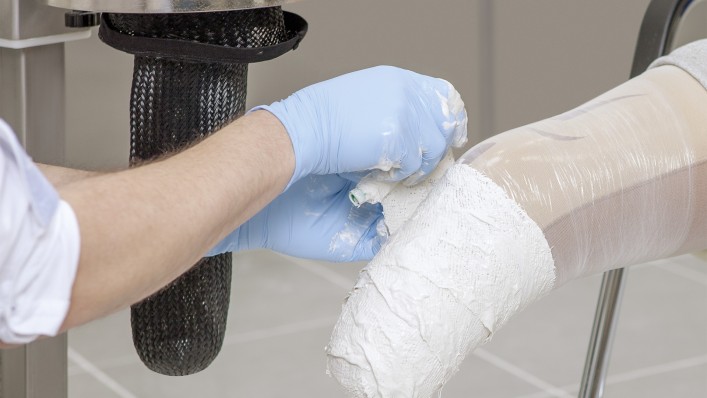
Step 3
The plaster bandages are applied in the accustomed manner. A tube sock or stretch film as the final layer has proven itself to minimise soiling of the casting tube.
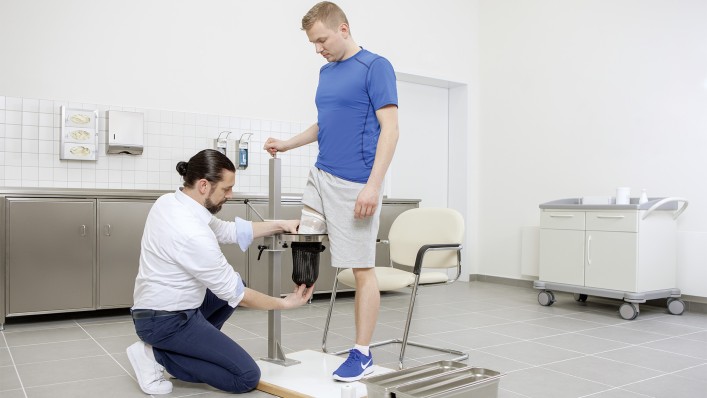
Step 4
The user steps into the Ipso Cast.
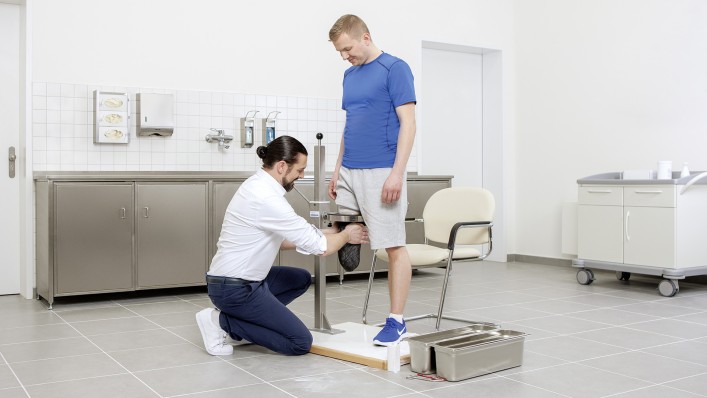
Step 5
While the plaster is setting, the technician can still intervene for additional loading and modelling of specific areas.
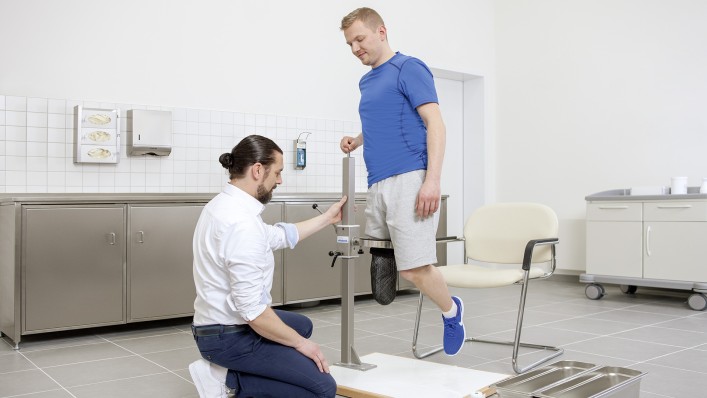
Step 6
The full body weight can be placed on the Ipso Cast while the plaster is setting.
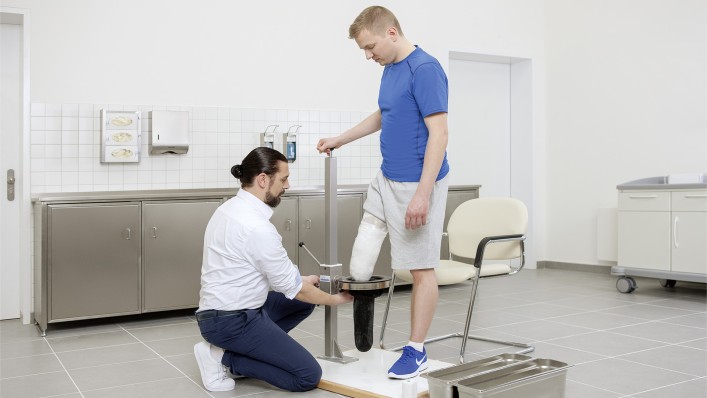
Step 7
The user steps out of the Ipso Cast.
User interview
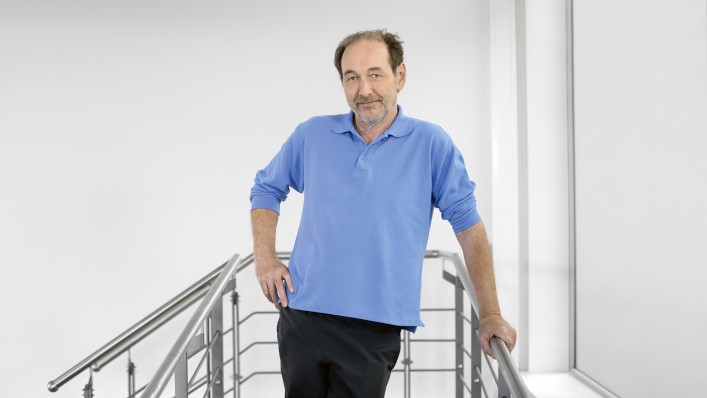
User interview with Ralf Triebel
Ralf Triebel has been wearing a lower leg prosthesis for 20 years. He has tried numerous prosthetic sockets during this time. Only two have fit on the first try. One of them was based on the new plaster casting technique with the Ipso Cast.
You’ve tried plaster casting with the Ipso Cast. What do you think?
I’m really impressed by the plaster casting technique with the Ipso Cast. It’s comfortable for me because it doesn’t take much time, and it improves the fit after the prosthetic socket is completed, which means less reworking is required. The result is a socket that lets me walk really well.
What’s different compared to your previous experiences?
I’m familiar with vacuum and manual casting methods and all their variations. With the Ipso Cast, there is no need for plastering twice, which takes a lot of time, and no vacuum is required. I just have to get into the casting tube and wait for the plaster to set – and I’m done.
What exactly has improved in terms of walking?
With the new check socket, I am no longer as sensitive to pressure at the end of the residual limb, because the specific areas of the prosthetic socket are adapted more precisely to the structure of my residual limb.
Are you going to have a socket modelled for yourself with the new technique?
I am currently wearing a prosthetic socket with an inner funnel only. With the Ipso Cast, I’d like to even walk without an inner socket in the future. So yes, I would like to be fitted with such a prosthetic socket!
Interview O&P professional
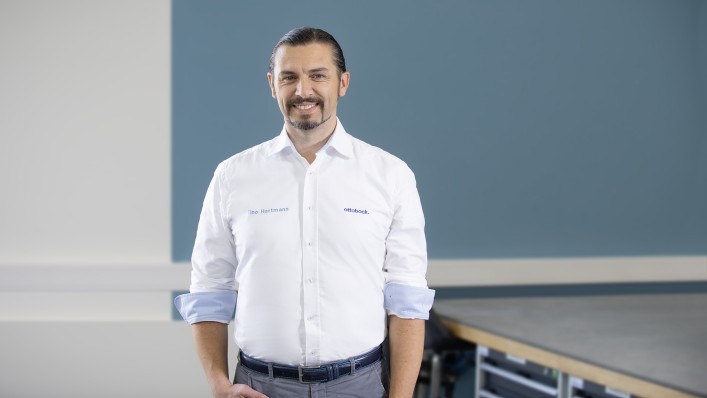
Interview with Ottobock O&P professional Tino Hartmann
What are the benefits of the Ipso Cast?
Every O&P professional knows how challenging it is to take a plaster cast quickly and cleanly. With the Ipso Cast, you can produce a plaster cast easily and quickly under load. The device simulates the actual pressure redistribution of a total surface weight-bearing socket. This means less reworking during the subsequent fabrication of a plaster model and the check socket.
Is working with the Ipso Cast complicated, and does it require a long training period?
The technician only requires a short period of training before preparing a plaster cast with the Ipso Cast. The process during plaster casting is very similar to conventional methods. The subsequent process steps are the same as well. This makes it really easy to integrate the new plaster casting technique into my usual workflow.
What are the differences while taking the plaster cast compared to conventional casting methods?
The Ipso Cast supports me while taking a plaster cast. After all, I only have two hands, while the casting tube is everywhere on the residual limb at once. That makes full contact plaster casting possible. However, I can still apply additional pressure to specific areas during plaster casting in order to model them individually.
What do you find especially helpful when working with the Ipso Cast?
You can see the pressure conditions while taking the plaster cast by looking at the casting tube, depending on whether the spaces between the fibres are more opened or closed. Based on my experience, I can then make subsequent corrections to specific areas by using my hands a bit more.
Downloads
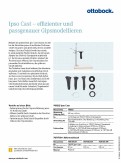
- Productbrief Ipso Cast 203.64 kB | PDF
Productbrief Ipso Cast
More efficient and precisely fitting plaster modelling
- Ipso Cast 743G15
- Casting tube 743Y760
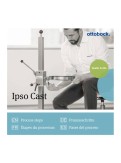
- Process steps Ipso Cast 403.01 kB | PDF
Process steps Ipso Cast
- Application with plaster
- Application with scan

